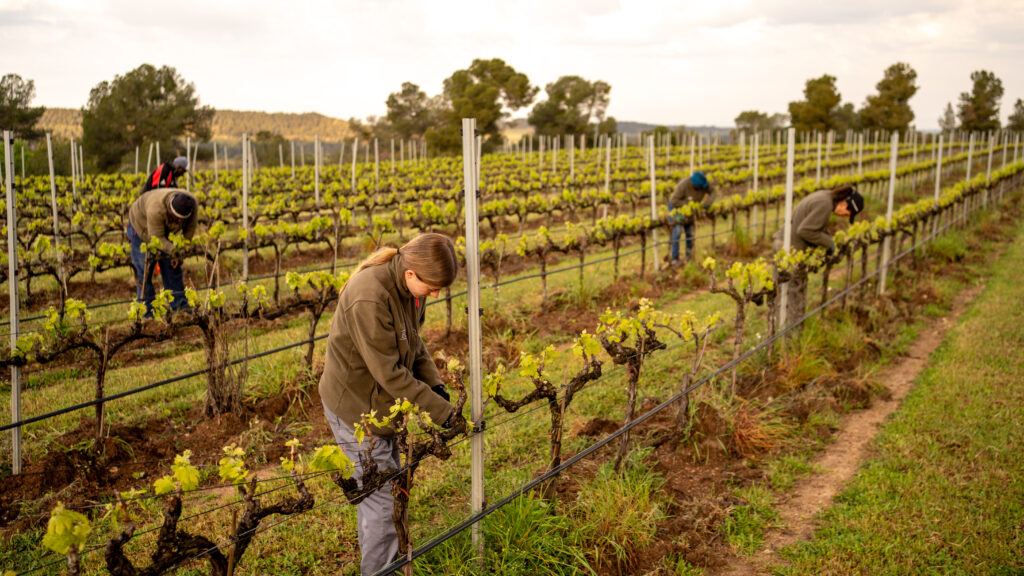Shoot thinning is a fundamental technique in viticulture, essential for producing wines of the highest quality.
This manual practice is carried out at the beginning of the vine’s vegetative cycle. Its goal is to slightly reduce the productive load to enhance the concentration and expressiveness of the fruit, thus ensuring excellent raw material for the production of high-quality wines.
Why is shoot thinning essential for wine quality?
Optimization of the plant’s resources: By removing unnecessary shoots, the vine can focus its energy on the more productive ones that will bear the grape clusters. This results in greater flavor concentration, increased complexity, and overall better wine quality.
Improved conditions for ripening: Shoot thinning promotes better air circulation and increased sun exposure for the vines — two key factors for uniform ripening of the grapes. This allows for a perfect balance in wine production.
Disease reduction: Shoot thinning helps keep vineyards healthy, improving grape quality and preventing possible contamination.
Maintaining planned production: This process also optimizes the results of winter pruning, ensuring that the development of the vine follows the desired direction for a more controlled and balanced yield.

A manual process to ensure wine quality
Its impact on fruit concentration, ripening, and plant health directly translates into wines of greater complexity and excellence. At Clos Pons, we use this technique with the aim of ensuring that, year after year, our wines reflect the highest quality and the true character of our terroir.


 Català
Català